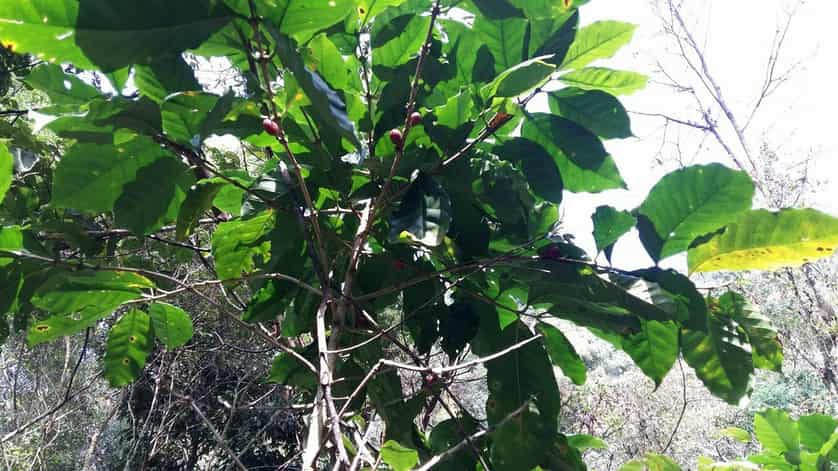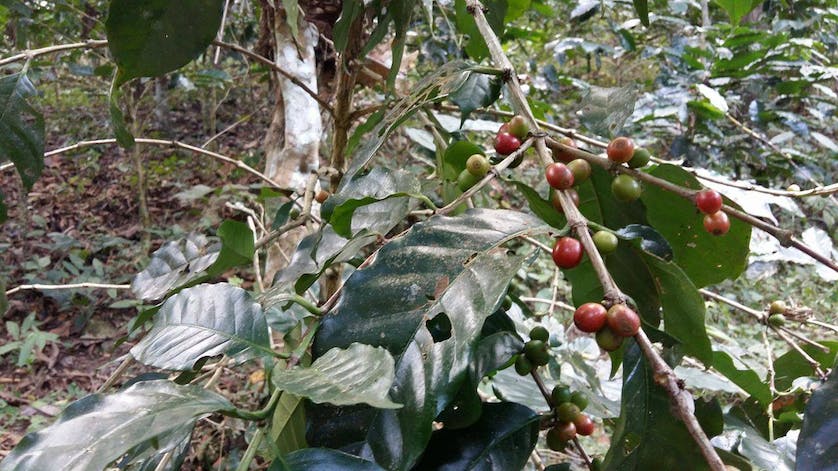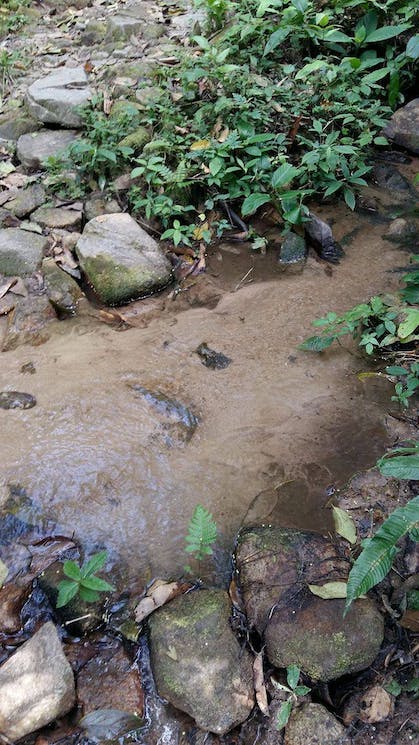Some of you may know Mae Kampong, a small little village located on the hills of Mae On in Chiang Mai. Now becoming a popular tourist attraction due to its good atmosphere and a perfect balance of exciting activities and relaxing mountain lifestyles. The area is probably most famous for the Flight of the Gibbon and the superb massages found up there, probably to work out all those stress knots from the thrill of the ziplines. There are also many homestays there too, great for those who are into slipping back to nature. Given that fact, I thought I’d introduce you all to something a little less known about Mae Kampong – its amazing nature trails, perfect for a hike (especially now before the cool winter months disappear). I contacted village headman, uncle Phrommin Puangmala to point me in the right direction!
I headed out from Chiang Mai towards Mae Kampong at the weekend, so the journey took a little longer than expected, around two and a half hours. When I arrived I had some time to kill before I met with Phrommin so I sat in a local coffee shop called Heaun Kafe and enjoyed some of the locally made coffee freshly brewed for me that morning. After a small stroll to work off some of that caffine, I went to meet with Phrommin and ask him about the best hiking trails in the area.

“The hiking trails around here are great for those wanting to get close and personal with nature, and really study it,” Phrommin said. “There are two main hiking trails here, the short one and the long one. Both routs will take you past coffee farms, tea plantations and even Miang plantations! It’s a path often used by locals too.” He told me that the official route starts at the village, and heads towards the Mae Kampong waterfall before looping round and ending up at the village again. I was prepared, map in hand (as long as my gps stayed in signal), and walking boots on, I bid farewell to Phrommin and headed off.
Given the time of day and the hot sun, I decided to take on the short route that day as I am neither a mad dog nor an Englishman. Dressed only in a t-shirt and shorts, I was possibly under equipped but safe under the caring guidance of a local guide named Arun. Along with a team of local university students, we set off up the trail. The first step took us past several farms where our guide told us about how she also grew herbs and tea on several plantations she pointed out along the way.
She pointed to a coffee field and said, “The coffee here has two variants, Arabica and Robusta. These coffee species are perfect for the cool weather but can also manage some of the heat from our sun.” As we continue upwards, I felt the cool breeze of higher altitudes hit my face, the air got damper and mosses started appearing.
It took me right up to the peak of Doi Mon Lan, hitting a whopping 1,700 metres above sea level. The forest surrounding me on my journey was full of mixed deciduous trees. I read on the way that as it is a sparse forest, much of the sunlight still makes it to the forest floor, and it rains around 1,200 to 1,400 milimetres per year. This makes it cool and despite the sun peeking through the leaves, it was not too hot at all. I also read warnings about being aware of forest fires, as during the hot season the forest can get very dry and flammable. Lots of wild animals were just out of sight, but not out of earshot. I heard scurrying mammals, birds, and insects. I swear I heard a tiger’s roar but I expect it was just my imagination.

Coming back down to a more manageable 800-1,200 metre level, heading back towards the town, the forest slowly turned from deciduous to evergreen, with a mismatch of pines, agarwood trees, cinnamon trees and burflower trees. Argwood trees are said to be some of the most expensive in the world, so they must be protected, nurtured and managed sustainably. I heard that this part of the forest is home to some of Thailand’s more rare animals such as the big-headed turtle and the salamander. Sadly, I saw neither.
The guide told us that villagers had made their own weirs along the trail to keep their farms and homes well watered. The Burflower tree induces a constant flow of water in the area, stimulated by higher humidity and the way the tree captures and stores water. It is referred to as the natural fountain tree.
While I was wondering I thought back to what uncle Phrommin was saying about the area. “Mae Kampong is a preserved forest, apart from the areas already claimed by locals doing agriculture dating back generations,” he said. “Most of the area is still forest, on steep mountain slopes.” Despite the slopes, it makes sense that most of the villagers are working in agriculture, it would be the logical move for anyone living here.

This was my first experience hiking, and I must admit it was fascinating. Although us Thai’s are not that into our walks in the hot sun, I found a new pleasure that I would like to do again. It was really educational too with a guide who knew so much and obviously loved the forest she lives in. Who’d have thought a small village in the hills of Chiang Mai would hold so many secrets.
For anyone interested in hiking there too, feel free to contact uncle Phrommin who will arrange a guide for you for 300 baht. His number is 085 675 4598.
